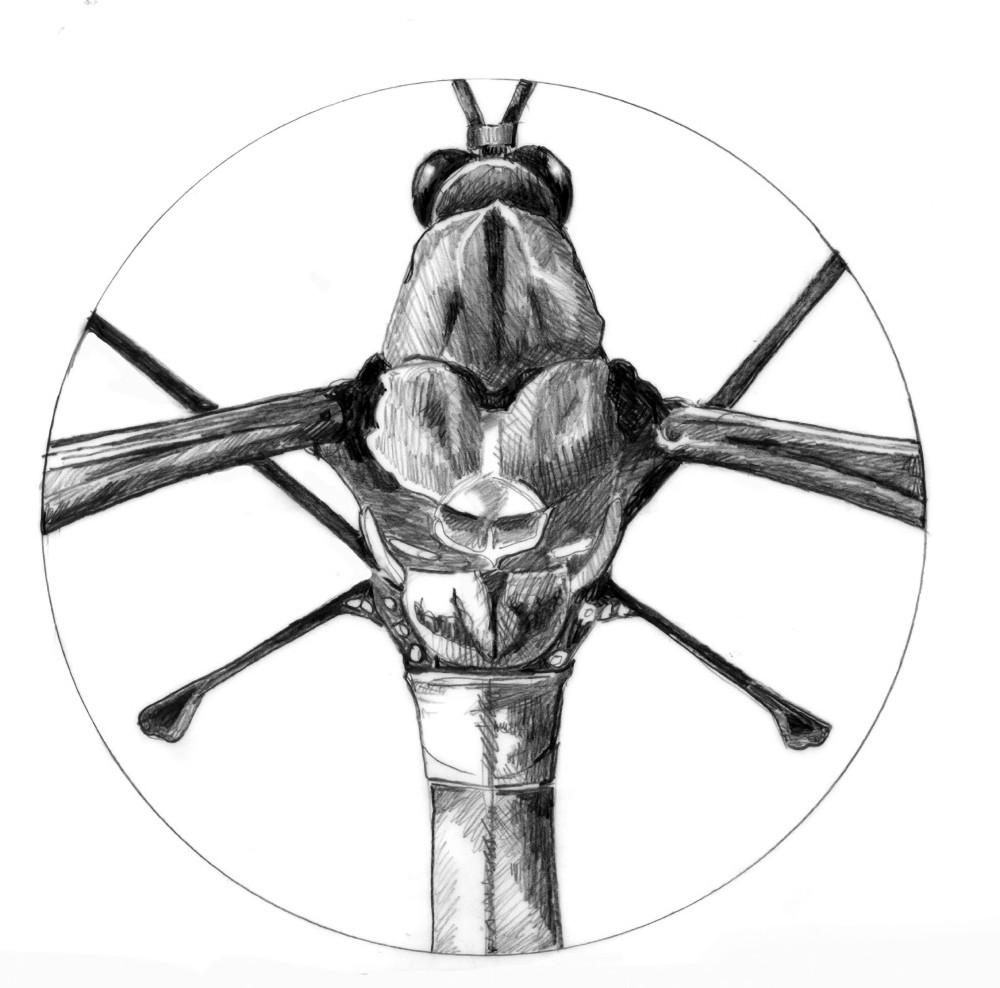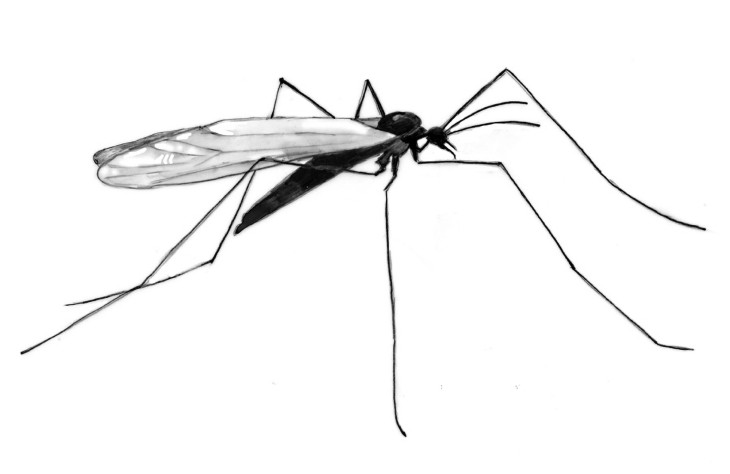
On days when I drop off my wife at her dance class, I explore Red Rocks Park in South Burlington, Vermont. I meet dog walkers and a few hardy birders but as far as I know, I’m the only one out there scanning for invertebrates. I might also be one of the few park visitors pleased to discover what, at first glance, looks like a swarm of mosquitoes hovering above the snow.
Most insects overwinter in quiescent states but a few remain active year-round. Winter crane flies (Diptera: family Trichoceridae) avoid exposure to frigid weather, but show up on days when temperatures rise high enough to make flight possible. Measuring a quarter to a half inch, these insects have long, spindly legs and paired, semitransparent wings that lie flat on their backs and extend past the tips of their abdomens.
Despite their superficial resemblance to mosquitoes, winter crane flies are more closely related to true crane-flies (Diptera: family Tipulidae). If you want to impress your friends, you can use a microscope or hand lens to point out a key physical difference between the two fly families: winter crane flies have three ocelli, or simple eyes, located between their compound eyes, a feature lacking in tipulids. And if you have your scope fired up anyway, behind the wings you’ll find paired halteres: vestiges of wings found in all dipterans. The halteres function like gyroscopes to preserve balance during flight. They won’t help you ID the fly, but your friends will be even more impressed.
An easier way to distinguish the two families is by season; the only true cranefly you’re likely to find in winter is a “snow fly” (family Tipulidae; genus Chionea), and its lack of wings is a dead giveaway. If it is long-legged and flies in winter, it is most likely a winter crane fly.
Physiological and behavioral adaptations make cold weather activity possible for these leggy insects. In common with many other winter invertebrates, winter crane flies can supercool their bodies, enduring temperatures well below the freezing point of water without freezing their tissues. Scientists have documented active winter crane flies at temperatures as low as 20 degrees.
There’s another way winter crane flies avoid becoming insect popsicles. They take shelter in caves, hollow trees, and human-made spaces such as mine shafts and abandoned buildings. They cluster together in these spaces, and on days when temperatures reach the 40s, the males take flight to form mating swarms several feet above the ground. Facing into the wind, they flap to rise and then fall about the same distance before flapping again. When a female enters the swarm, a male will grapple with her and the pair falls to the ground to mate.
Females lay eggs in insulated spaces during winter, for example, in decomposing plant debris and in rodent burrows, where soil depth and rodent body heat keep the habitat warm and the larvae have a ready food supply in the form of droppings. Being happy and warm in a pile of excrement, I realize, is not for everyone, but if it works for these little maggots, let’s not judge them too harshly. Besides, they do a remarkable job of recycling excrement and rotting vegetation.
The larvae hatch in early spring and molt three times between late spring and early fall, then after they reach their fourth instar, form pupae. How long it takes to reach the pupal stage varies broadly, and adults can emerge at almost any time of year. Observations peak between October and February, in part because they are quite common then, but perhaps also because there are fewer other flying insects to observe in winter.
Although winter crane flies are valuable contributors to local food webs, including as a source of cold weather protein for birds and other wildlife, there’s a risk that they could become invasive in areas outside their natural range, displacing other insects. As early as the 1960s, scientists documented populations of winter crane flies in South Georgia, an island in the South Atlantic Ocean, which is about as far south as Newfoundland is north. Winter crane flies have made it to the South American mainland and more recently scientists have expressed concern that one species (Trichocera maculipennis) may become invasive in Antarctica. Transported root vegetables may well be the reason these northern insects are appearing at the southern end of the planet. Unless there are openings to your root cellar, home invasion is unlikely with these flies. Rest assured, when you see one or two crawling on the snow, or perhaps encounter a small swarm hovering above a woods trail, they are harmless. They are far more interested in each other than in you, and they are doing their part to maintain a healthy ecosystem.


